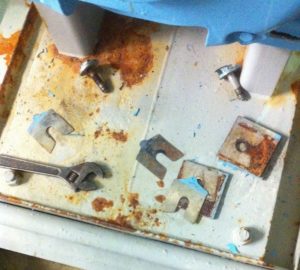
This came to mind recently in four different training classes. The clients had invested heavily in laser shaft alignment tools allowing their maintenance technicians to be successful with their precision shaft alignments.
However, said clients also sent their technicians into “the alignment battle” with boxes of odds & ends shims that were used, corroded, and damaged at best.

That being said, we as craftsmen, and women have the responsibility to make sure our precision alignment tools include shims that are clean, in good condition, and organized.
What puzzled me was that all involved, seemed surprised that the alignment, did not go as smoothly as planned. This tells me that this is an accepted, and common practice.
I watched as the maintenance personnel performing the precision shaft alignment spent 30 to 45 minutes to wire brush, strip paint, and clean, shims that had been previously used. This had to be done to have enough shims to make the vertical correction. The result of this practice? Multiple shim changes, because the exact combination of shims needed was not available. Damaged shims also caused imprecise results. Eventually, they were able to get the alignment within acceptable tolerances.
This illustrates that without proper equipment extra corrections during a precision shaft alignment are often the results. Don’t misunderstand me, keeping used shims, that are in good condition, to be used in a pinch is an altogether different strategy, and is sometimes necessary. However, the added downtime costs, extra man hours, and possible damaged equipment that follows when using old subpar shims will more than outweigh the cost of a set of new precision stainless steel shims.
This may not be rocket science, but it is good precision shaft alignment fundamentals. Don’t overlook the obvious advantages of quickness and accuracy created by using new, clean, flat, precision shims of consistent thickness, which of course is more cost effective in the long run.
So again, I say “pay me now or pay me later”.






